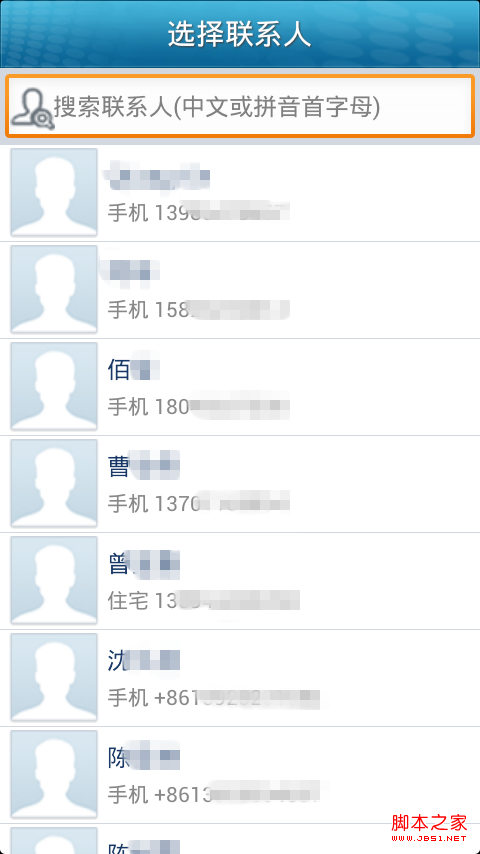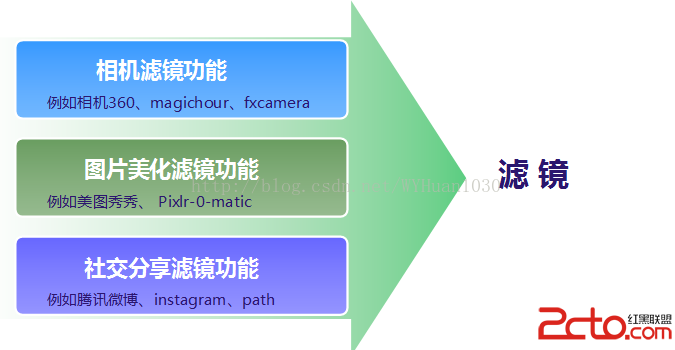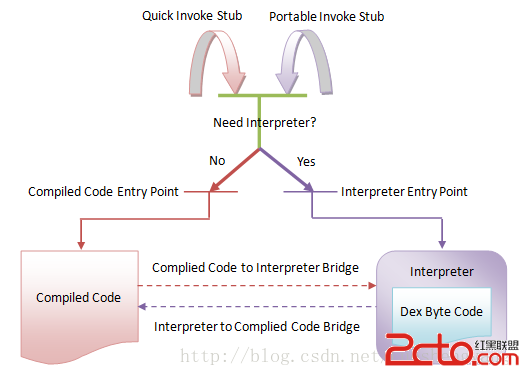編輯:關於Android編程
1、藍牙搜索的實現
利用藍牙的發現和完成動作動態注冊廣播接受者獲得藍牙設備。
第一步,獲得藍牙適配器
BluetoothAdapter mBtAdapter= BluetoothAdapter.getDefaultAdapter();
// 判斷藍牙是否打開
if (!mAdapter.isEnabled()) {
mAdapter.enable();
// Register for broadcasts when a device is discovered
IntentFilter filter = new IntentFilter(BluetoothDevice.ACTION_FOUND);
this.registerReceiver(mReceiver, filter);
// Register for broadcasts when discovery has finished
filter = new IntentFilter(BluetoothAdapter.ACTION_DISCOVERY_FINISHED);
this.registerReceiver(mReceiver, filter);filter.setPriority(Integer.MAX_VALUE);
// The BroadcastReceiver that listens for discovered devices and
// changes the title when discovery is finished
private final BroadcastReceiver mReceiver = new BroadcastReceiver() {
@Override
public void onReceive(Context context, Intent intent) {
String action = intent.getAction();
// When discovery finds a device
if (BluetoothDevice.ACTION_FOUND.equals(action)) {
// Get the BluetoothDevice object from the Intent
BluetoothDevice device = intent.getParcelableExtra(BluetoothDevice.EXTRA_DEVICE);
// If it's already paired, skip it, because it's been listed already
if (device.getBondState() != BluetoothDevice.BOND_BONDED) {
mNewDevicesArrayAdapter.add(device.getName() + "\n" + device.getAddress());
}
// When discovery is finished, change the Activity title
} else if (BluetoothAdapter.ACTION_DISCOVERY_FINISHED.equals(action)) {
setProgressBarIndeterminateVisibility(false);
setTitle(R.string.select_device);
if (mNewDevicesArrayAdapter.getCount() == 0) {
String noDevices = getResources().getText(R.string.none_found).toString();
mNewDevicesArrayAdapter.add(noDevices);
}
}
}
};關鍵代碼如下:
/**
* 接收器 當搜索藍牙設備完成時調用
*/
private BroadcastReceiver _foundReceiver = new BroadcastReceiver() {
public void onReceive(Context context, Intent intent) {
BluetoothDevice device = intent
.getParcelableExtra(BluetoothDevice.EXTRA_DEVICE);
// 將結果添加到列表中
_devices.add(device);
DeviceInfo info = new DeviceInfo();
info.setmDeviceName(device.getName());
info.setmDeviceMacAddr(device.getAddress());
infos.add(info);
info = null;
// 顯示列表
showDevices();
}
};
private BroadcastReceiver _discoveryReceiver = new BroadcastReceiver() {
@Override
public void onReceive(Context context, Intent intent) {
// 卸載注冊的接收器
unregisterReceiver(_foundReceiver);
unregisterReceiver(this);
_discoveryFinished = true;
}
};這樣便完成藍牙的搜索了。
2、藍牙配對
藍牙要想通信目前是必須要先配對才能連接的。
藍牙配對的api是hide的。但是api19可以直接調用藍牙設備的配對方法。
所以配對都是利用反射的方法。這裡有一個強大的工具類可以直接拿來使用,如下:
public class ClsUtils {
public ClsUtils() {
// TODO Auto-generated constructor stub
}
/**
* 與設備配對 參考源碼:platform/packages/apps/Settings.git
* /Settings/src/com/android/settings/bluetooth/CachedBluetoothDevice.java
*/
static public boolean createBond(Class btClass, BluetoothDevice btDevice)
throws Exception
{
Method createBondMethod = btClass.getMethod("createBond");
Boolean returnValue = (Boolean) createBondMethod.invoke(btDevice);
return returnValue.booleanValue();
}
/**
* 與設備解除配對 參考源碼:platform/packages/apps/Settings.git
* /Settings/src/com/android/settings/bluetooth/CachedBluetoothDevice.java
*/
static public boolean removeBond(Class btClass, BluetoothDevice btDevice)
throws Exception
{
Method removeBondMethod = btClass.getMethod("removeBond");
Boolean returnValue = (Boolean) removeBondMethod.invoke(btDevice);
return returnValue.booleanValue();
}
static public boolean setPin(Class btClass, BluetoothDevice btDevice,
String str) throws Exception
{
try
{
Method removeBondMethod = btClass.getDeclaredMethod("setPin",
new Class[]
{byte[].class});
Boolean returnValue = (Boolean) removeBondMethod.invoke(btDevice,
new Object[]
{str.getBytes()});
Log.e("returnValue設置密碼", "" + returnValue.booleanValue());
return returnValue.booleanValue();
}
catch (SecurityException e)
{
// throw new RuntimeException(e.getMessage());
e.printStackTrace();
}
catch (IllegalArgumentException e)
{
// throw new RuntimeException(e.getMessage());
e.printStackTrace();
}
catch (Exception e)
{
// TODO Auto-generated catch block
e.printStackTrace();
}
return false;
}
// 取消用戶輸入
static public boolean cancelPairingUserInput(Class btClass,
BluetoothDevice device)
throws Exception
{
Method createBondMethod = btClass.getMethod("cancelPairingUserInput");
cancelBondProcess(btClass,device) ;
Boolean returnValue = (Boolean) createBondMethod.invoke(device);
Log.i("取消對話框","cancelPairingUserInput"+returnValue.booleanValue());
return returnValue.booleanValue();
}
// 取消配對
static public boolean cancelBondProcess(Class btClass,
BluetoothDevice device)
throws Exception
{
Method createBondMethod = btClass.getMethod("cancelBondProcess");
Boolean returnValue = (Boolean) createBondMethod.invoke(device);
return returnValue.booleanValue();
}
/**
*
* @param clsShow
*/
static public void printAllInform(Class clsShow)
{
try
{
// 取得所有方法
Method[] hideMethod = clsShow.getMethods();
int i = 0;
for (; i < hideMethod.length; i++)
{
Log.e("method name", hideMethod[i].getName() + ";and the i is:"
+ i);
}
// 取得所有常量
Field[] allFields = clsShow.getFields();
for (i = 0; i < allFields.length; i++)
{
Log.e("Field name", allFields[i].getName());
}
}
catch (SecurityException e)
{
// throw new RuntimeException(e.getMessage());
e.printStackTrace();
}
catch (IllegalArgumentException e)
{
// throw new RuntimeException(e.getMessage());
e.printStackTrace();
}
catch (Exception e)
{
// TODO Auto-generated catch block
e.printStackTrace();
}
}
static public boolean pair(String strAddr, String strPsw)
{
boolean result = false;
BluetoothAdapter bluetoothAdapter = BluetoothAdapter
.getDefaultAdapter();
bluetoothAdapter.cancelDiscovery();
if (!bluetoothAdapter.isEnabled())
{
bluetoothAdapter.enable();
}
BluetoothDevice device = bluetoothAdapter.getRemoteDevice(strAddr);
if (device.getBondState() != BluetoothDevice.BOND_BONDED)
{
try
{
Log.d("mylog", "NOT BOND_BONDED");
boolean flag1=ClsUtils.setPin(device.getClass(), device, strPsw); // 手機和藍牙采集器配對
boolean flag2=ClsUtils.createBond(device.getClass(), device);
// remoteDevice = device; // 配對完畢就把這個設備對象傳給全局的remoteDevice
result = true;
}
catch (Exception e)
{
// TODO Auto-generated catch block
Log.d("mylog", "setPiN failed!");
e.printStackTrace();
} //
}
else
{
Log.d("mylog", "HAS BOND_BONDED");
try
{
ClsUtils.removeBond(device.getClass(), device);
//ClsUtils.createBond(device.getClass(), device);
boolean flag1= ClsUtils.setPin(device.getClass(), device, strPsw); // 手機和藍牙采集器配對
boolean flag2=ClsUtils.createBond(device.getClass(), device);
// remoteDevice = device; // 如果綁定成功,就直接把這個設備對象傳給全局的remoteDevice
result = true;
}
catch (Exception e)
{
// TODO Auto-generated catch block
Log.d("mylog", "setPiN failed!");
e.printStackTrace();
}
}
return result;
}
}flag3= ClsUtils.createBond(device.getClass(), device);
mReceiver=new ParingReceiver(device); IntentFilter filter=new IntentFilter(); filter.addAction( BluetoothDevice.ACTION_PAIRING_REQUEST); filter.setPriority(Integer.MAX_VALUE); registerReceiver(mReceiver, filter);
private class ParingReceived extends BroadcastReceiver{
@Override
public void onReceive(Context context, Intent intent) {
BluetoothDevice btDevice=mAdapter.getRemoteDevice("EC:89:F5:98:46:f9");
try {
setPin(btDevice.getClass(),btDevice,"000000");
cancelPairingUserInput(btDevice.getClass(), btDevice);
} catch (Exception e) {
// TODO Auto-generated catch block
e.printStackTrace();
}
}
藍牙配對完成後就可以連接通信了。
3、藍牙通信
藍牙同時的本質是藍牙套接字,一個主動發起連接的的設備做客戶端,一個監聽連接的設備做服務端,類似sokcet網絡編程,利用多線程,讀取數據流就可完成藍牙通信。
如下是藍牙串口通信的關鍵代碼:
/**
* 建立連接並通信
*
* @param btDev
* @return
*/
private boolean connect(BluetoothDevice btDev) {
boolean flag = false;
try {
/*if(btDev.fetchUuidsWithSdp()){
btDev.getUuids();
}*/
//建立連接
mSocket = btDev
.createRfcommSocketToServiceRecord(UUID.fromString("00001101-0000-1000-8000-00805F9B34FB"));
mSocket.connect();
mOutputStream = mSocket.getOutputStream();
mInputStream = mSocket.getInputStream();
mOutputStream.write("StartOnNet\n".getBytes());
mOutputStream.flush();
flag = true;
} catch (Exception e) {
}private class ServerThread implements Runnable {
private InputStream mInputStream;
private OutputStream mOutputStream;
public ServerThread() {
}
@Override
public void run() {
try {
while (true) {
mBluetoothServerSocket = mAdapter
.listenUsingRfcommWithServiceRecord(
"btspp",
UUID.fromString("00001101-0000-1000-8000-00805F9B34FB"));
Log.i("服務端線程運行", "藍牙服務端線程開始");
Log.i("服務端線程運行", "藍牙服務端線程阻塞中");
mBluetoothSocket = mBluetoothServerSocket.accept();
if (mBluetoothSocket != null) {
break;
}
}
Log.i("服務端線程運行", "藍牙服務端線程<<<<<<<<<<<<<");
mInputStream = mBluetoothSocket.getInputStream();
mOutputStream = mBluetoothSocket.getOutputStream();
byte[] data = getSocketResult(mInputStream);
String tempString = new String(data);
Log.i("藍牙服務端監聽str", tempString);
// 向客戶端發送數據
if (tempString.equals("StartOnNet\n")) {
mOutputStream.write("haha".getBytes());
mOutputStream.flush();
if(!isServiceRunning("com.yqq.endClient3.service.GpsInfoCollectionService",BluethoothServer.this)){
// 開啟GPS收集服務
gpsService= new Intent(BluethoothServer.this,
GpsInfoCollectionService.class);
Log.i("藍牙服務端監聽<<<<<<<<<<<<<<<<<<<<<<", "<<<<<<<<<<<<<<<<<");
startService(gpsService);
}
}
} catch (Exception e) {
// TODO: handle exception
} finally {
if (mInputStream != null) {
try {
mInputStream.close();
mInputStream = null;
} catch (IOException e) {
// TODO Auto-generated catch block
e.printStackTrace();
}
}
if (mInputStream != null) {
try {
mOutputStream.close();
mOutputStream = null;
} catch (IOException e) {
// TODO Auto-generated catch block
e.printStackTrace();
}
}
if (mBluetoothSocket != null) {
try {
mBluetoothSocket.close();
mBluetoothSocket = null;
} catch (IOException e) {
// TODO Auto-generated catch block
e.printStackTrace();
}
}
if (mBluetoothServerSocket != null) {
try {
mBluetoothServerSocket.close();
mBluetoothServerSocket = null;
Looper.prepare();
Message message = Message.obtain();
message.what = 0x123456;
mHandler.sendMessage(message);
Looper.loop();
} catch (IOException e) {
// TODO Auto-generated catch block
e.printStackTrace();
}
}
}
}
}
 android 加載本地聯系人實現方法
android 加載本地聯系人實現方法
首先先建布局文件,界面很簡單,就是一個搜索框和下面的聯系人列表: 復制代碼 代碼如下: <?xml version=1.0 encoding=utf-8
 Android Camera 實時濾鏡(二)
Android Camera 實時濾鏡(二)
一、Android平台濾鏡濾鏡這個功能在目前的市場上應用很廣泛,發展也非常快,總結起來,基本上有以下三種應用會包含濾鏡功能,都各有所長。 二、相機濾鏡介紹1、相
 Android運行時ART執行類方法的過程分析
Android運行時ART執行類方法的過程分析
在前面一篇文章中,我們分析了ART運行時加載類以及查找其方法的過程。一旦找到了目標類方法,我們就可以獲得它的DEX字節碼或者本地機器指令,這樣就可以對它進行執行了。在AR
 Android插件實例——360 DroidPlugin詳解
Android插件實例——360 DroidPlugin詳解
在中國找到錢不難,但你的一個點子不意味著是一個創業。你談一個再好的想法,比如我今天談一個創意說,新浪為什麼不收購GOOGLE呢?這個創意很好。新浪一收購GOOGLE,是